The Monday After: Exploring the surroundings of birds, bugs
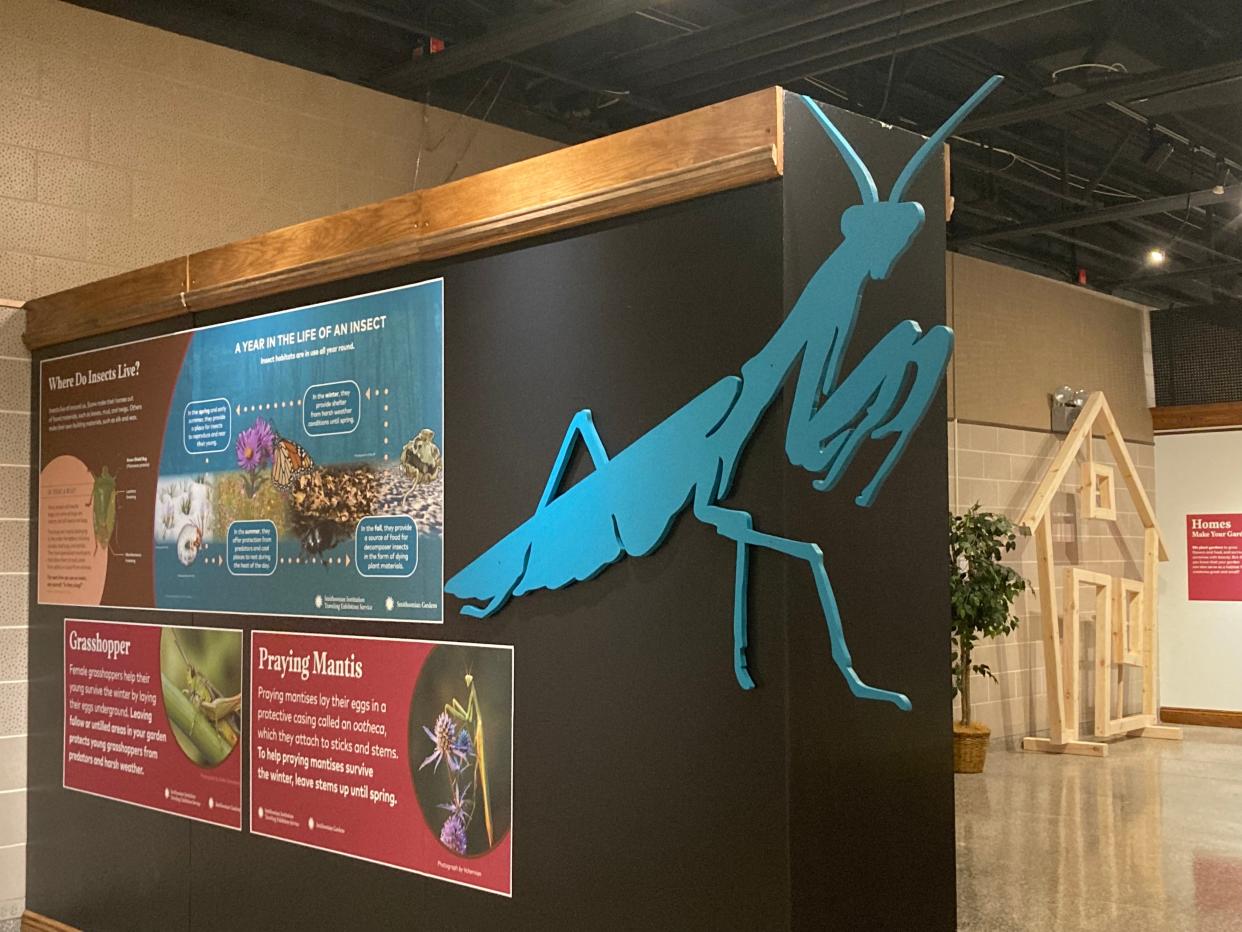
"Habitat," the Smithsonian Gardens traveling exhibition on display in the Keller Gallery of McKinley Presidential Library & Museum, is an appropriate one to inhabit a museum operated by a historical society.
The evolution of nature's habitats has taken place in a manner that is documented far into the past, the exhibit shows.
And one of the major galleries at the McKinley museum is Discover World, an interactive science center that takes visitors on a scientific journey through the past, present and future.
"Our mission in the Keller Gallery is history and science," explained Kimberly Kenney, executive director and curator of McKinley museum. "It's been a long time since we've had one (on science)."
The "Habitat" exhibit is on display through March 30. It "explores the stories and science of habitats, and the plants, animals and humans that call them home," according to information supplied at the museum's website. The exhibition "examines the critical need for diverse habitats, how interconnected and fragile habitats are, and what we can do to protect them."
It arrived at McKinley museum with some assembly required.
"An exhibit like this usually is cost prohibitive for the museum, but this was a 'build-it-yourself,' so the fees were reasonable," Kenney explained. "They provide digital files of the panels and also drawings to build the elements."
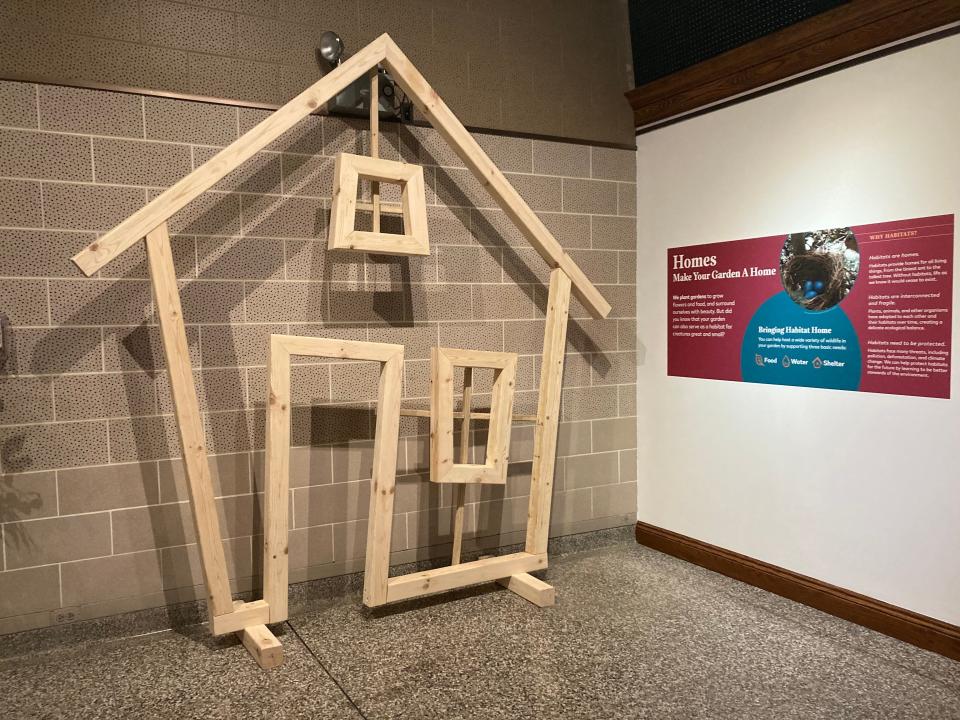
Museum staff printed the text panels for the exhibit, and built the wooden outline of a house, she said, as well as constructing a wooden structure the size of an eagle's nest and creating a large wooden cut-out of an insect.
"We also have live bugs from Discover World," said Kenney. "We moved three cages of bugs up to the Keller Gallery."
Hissing cockroaches. Millipedes. Pill bugs.
Bug-fearing visitors can relax. They're behind glass.
"Look deep into nature, and then you will understand everything better."
Albert Einstein, as quoted on the entrance panel of the Smithsonian Gardens traveling "Habitat"
Origin traced to Smithsonian Garden
"Habitat" was developed by the Smithsonian Gardens, which was born as the Horticultural Services Division in 1973 and renamed the Smithsonian Gardens in 2010.
According it its website, it "extends the Smithsonian’s museum experience in a public garden setting with over 180 acres of outdoor gardens including 13 public exhibition gardens often called the Smithsonian institution’s 'museum without walls.'"
"Habitat," one of the traveling exhibits that are an outgrowth of the Gardens, explores our environment as envisioned by Albert Einstein, who once said "look deep into nature, and then you will understand everything better."
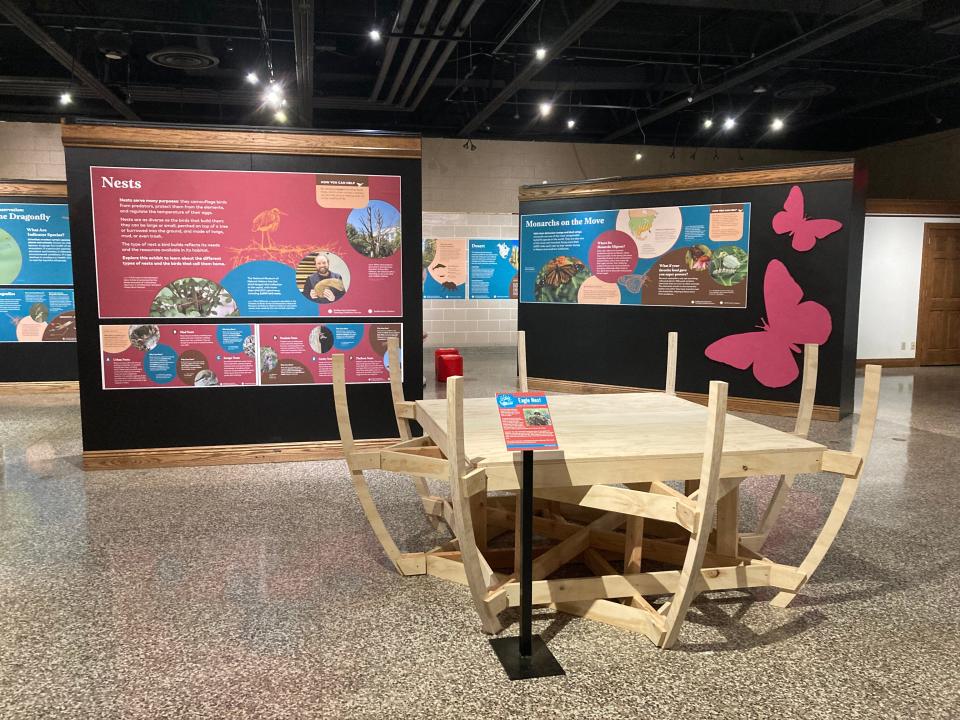
The exhibit includes sections on bird nests, life in dead wood, monarch butterflies in meadows, bug habitats, biomes in different regions of the country, conservation of forests and the sea, the lifestyle of bugs, and methods for making homes for a variety of species in your own garden.
"People who see this exhibit will learn that a lot of the things in it happen in our own yards and gardens," said Kenney. "They're happening all around us and we're not always aware."
A regard for the past is exhibited in "Habitat," which acknowledges that species and their habitats evolve for reasons that promote growth. But, an interest in the future also is displayed.
"It's a response to things that have happened in our history – especially deforestation – and things people can do to mitigate the effects of those things," explained Kenney. "In general, it's an understanding of our effect on the environment over time."
Kenney noted that even the humble mushroom reached a lofty place in medical history by crossing the path of the human race. Penicillin initially was produced from a fungus that grew naturally. The drug has proven through history to hold "a lot of diseases" in check, Kenney observed.
Panel text in the "Habitat" exhibit takes note of this lasting achievement in medicine, putting it into both historical and medical context.
"The antibiotic penicillin, which helps treat bacterial infections, was developed from the mold Penicillium chrysogenum (also known as Penicillium notatum). Scottish bacteriologist Sir Alexander Fleming discovered the wonder drug in 1928. Since then, it has saved millions of lives," the text panel explains. "Penicillin’s yellow color and its amazing ability to prevent life-threatening bacterial infections earned it the nickname 'yellow magic.'"
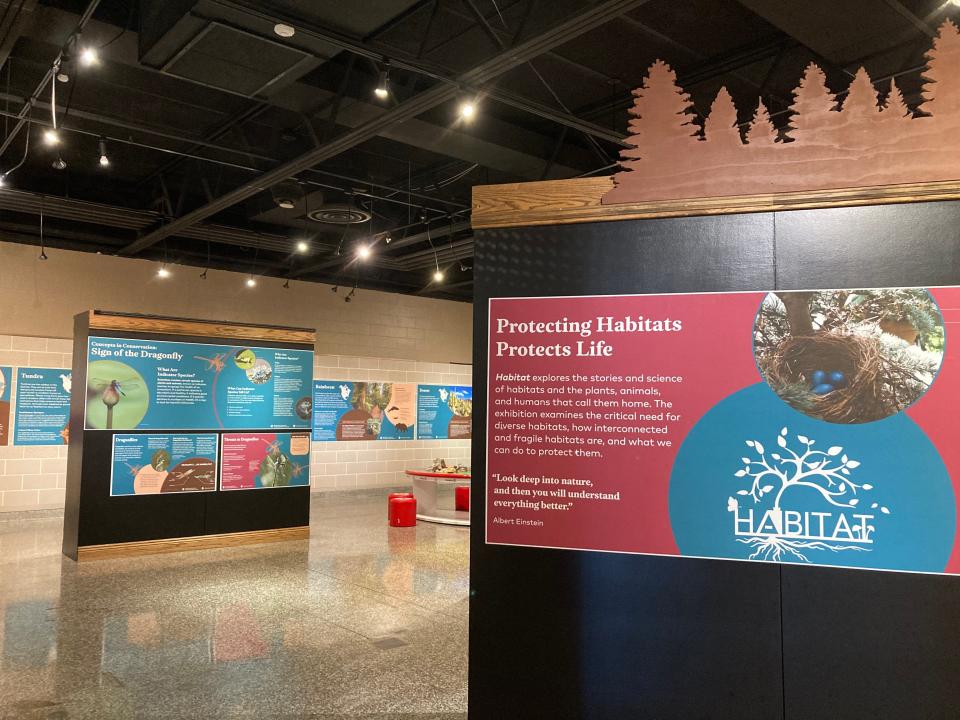
Exhibit reflects on past, envisions future
Text in the exhibit explains how habitats can regenerate themselves over time, and describes ways we can play a part. A tree may die, for example, but the presence of its "dead" wood still can contribute to life in its surroundings.
"The death of a tree may seem like the end of the story, but it’s actually the start of a new chapter," a text panel explains. "When a tree falls, it opens up part of the forest floor to sunlight. As the wood is decayed by fungi, insects, and bacteria, it turns into humus—the organic component of soil—which supports new life.
"Fallen trees, known as 'nurse logs,' provide nutrients, water, and protection from competing plants. They create an ideal environment for new seedlings, mosses, lichens, and fungi to grow."
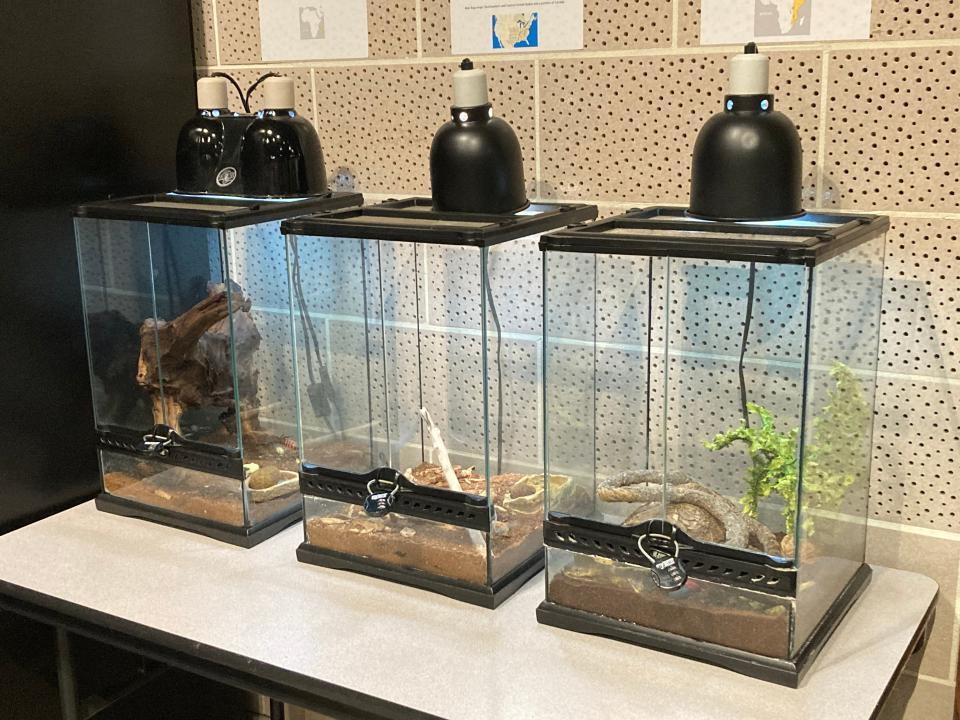
Trees, in death, often contribute to agriculture, "Habitat" notes.
"Used for centuries in Germany and Eastern Europe, Hugelkultur is a gardening and farming technique in which dead wood is layered with soil and compost to create a raised garden bed," one text panel explains. "Spaces between the logs help retain water. As the wood decomposes, heat and nutrients are released, creating an ideal microenvironment for plant growth."
Kenney said that the "dead wood" section of the exhibit, while it goes against our way of thinking, gives visitors wise advice for living within our environment.
"From our standards, we feel a need to clean it up," Kenney explained. "No, leave it. It's part of the ecosystem. I'm not saying there should be code violations, but some things could be left alone."
Such are the life sustaining lessons taught by "Habitat." And Kenney hopes visitors, especially the young, will learn them from the gallery "class."
"We're hoping that people who book tours of the museum can add a tour 'Habitat' to them," she explained, noting that tours of Keller Gallery exhibitions are not generally included in the museum tours. "We've already had schools come in to take tours of it."
Reach Gary at gary.brown.rep@gmail.com. On Twitter: @gbrownREP
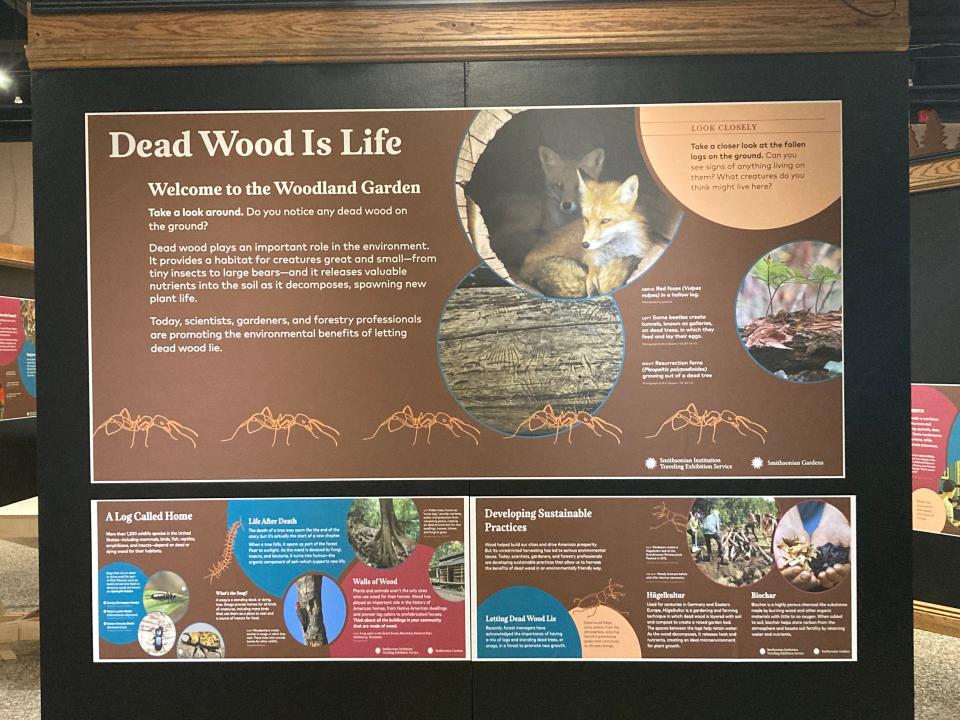
About the exhibit
WHAT – "Habitat"
WHERE – Keller Gallery of McKinley Presidential Library & Museum at 800 McKinley Monument Dr. NW
WHEN – Through March 30.
WHY – Explores the stories and science of habitats, and the plants, animals, and humans that call them home
WHO – Created by Smithsonian Gardens together with partners from across the Smithsonian and curated by McKinley Presidential Library Executive Director Kimberly Kenney
HOW – The Keller Gallery is open during business hours of McKinley museum, 9 a.m. to 4 p.m. Tuesday through Saturday. Admission is $13 for adults, $12 for seniors, and $11 for children 3-18. The Keller Gallery will be open from 6 to 8 p.m. Dec. 1 during the museum's annual Holiday open house, and event that is free for museum members and $7 for nonmembers. For information call 330-455-7043.
This article originally appeared on The Alliance Review: The Monday After: McKinley Museum says Smithsonian exhibit explores surroundings of birds, bugs

